Cures without Surgery: Advanced Cancer Treatment
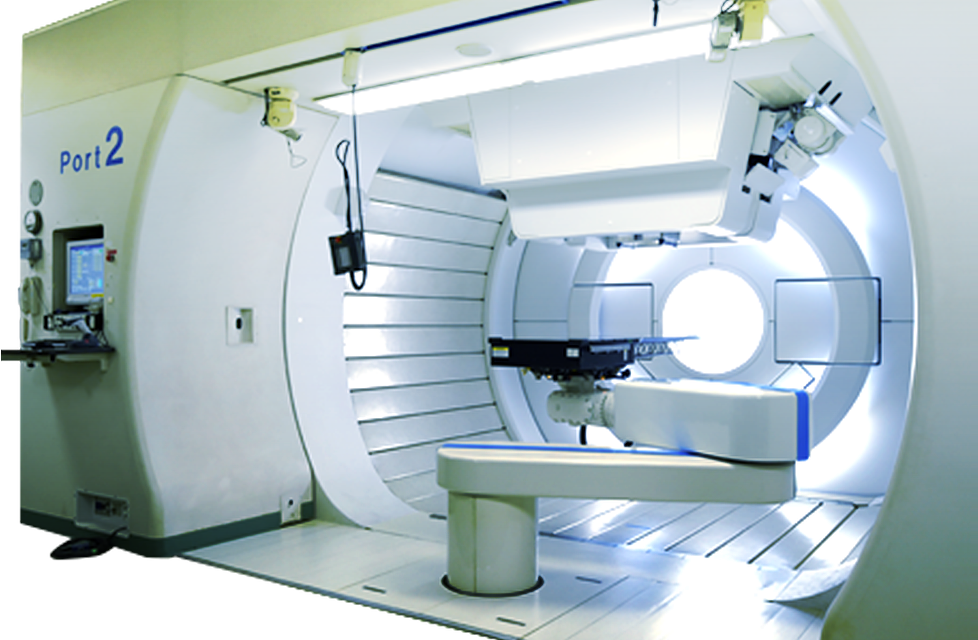
It is said that one of every two Japanese people alive today will eventually contract cancer and one in three will die of it. Treating and preventing cancer have become issues of national importance. Radiation is one of the three main methods of treating cancer, and one type of radiation treatment that employs proton beams is currently the focus of considerable attention. Proton beam treatment systems manufactured by the SHI Group are playing a leading role in cancer treatment today.
Proton Beam Cancer Treatment-Painless, Easy on the Patient's Body
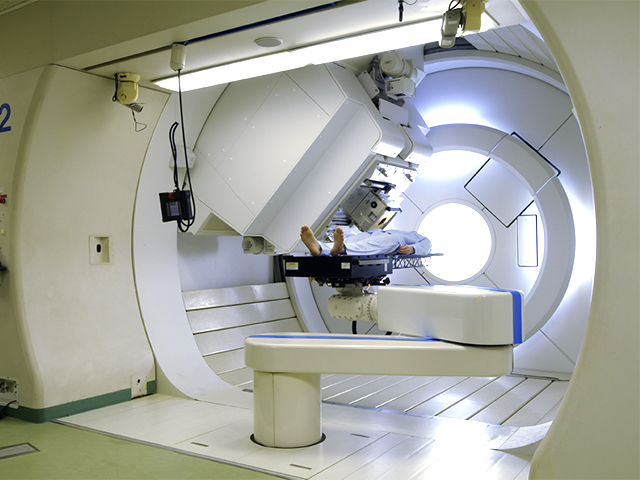
In recent years increasing attention has focused on proton beam treatment in clinical settings. One of its advantages is that it involves far less physical trauma to the patient's body than invasive surgery. Patients can maintain their quality of life and continue to go about their daily affairs while receiving treatment. Proton beams exhibit a physical property known as "black peak" that enables a large amount of energy to be released at a specific predetermined location, annihilating the tissue there. By making use of this property, the proton beam can be concentrated on the cancerous focus while causing almost no damage to the healthy cells surrounding it. This means that proton beam therapy can be more effective than conventional forms of treatment. In addition, since the proton beam can be directed even at cancerous foci that are near vital organs, it can be used to reach cancers that were previously untreatable. Proton beam therapy is yielding impressive results in the treatment of cancer of the head and neck, lungs, liver, and prostate gland, among others.
At present there are seven proton beam treatment facilities in operation in Japan, and the number is expected to rise to ten by 2014. Japan is a world leader in this field in both the number of facilities and the level of technology, and now new facilities are coming into service at a rapid pace overseas as well, particularly in Europe, North America, and Asia.
Design and Production Expertise from Accelerators and Associated Structures
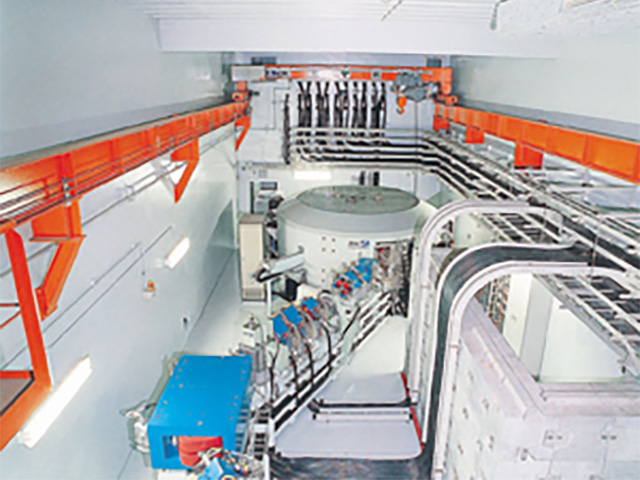
Proton beam treatment systems consist of components that include a cyclotron for generating and accelerating proton beams, a beam transport unit for sending the proton beam to the treatment room, a rotating gantry exposure device for directing the proton beam at the desired angle, and an X-ray imaging device for precise positioning.
A structure called a rotating gantry, installed at the rear of the treatment room, is equipped with electromagnets that are used to guide the beam of protons, which have been accelerated to nearly 70 percent the speed of light by the cyclotron, in the desired direction, depending on the type of cancer being treated. The rotating gantry is made of steel, is about 10 meters in diameter, and weighs approximately 150 tons.
Building such a proton beam treatment system requires the technical ability to design and manufacture components such as accelerators and large-scale structures. The SHI Group was able to develop a practical system ahead of the competition because of its expertise in designing and building steel structures, combined with a track record designing and building accelerators for charged particles that goes back to the 1970s. In 1997 The SHI Group installed Japan's first proton beam treatment system at the Hospital East facility of the National Cancer Center. This system was the first to receive official certification as medical equipment for clinical use. Since then The SHI Group has received orders from facilities both in Japan and overseas, and full-scale production of proton beam treatment systems is underway.
Pursuing Further Technical Development, Greater Compactness, and Reduced Cost
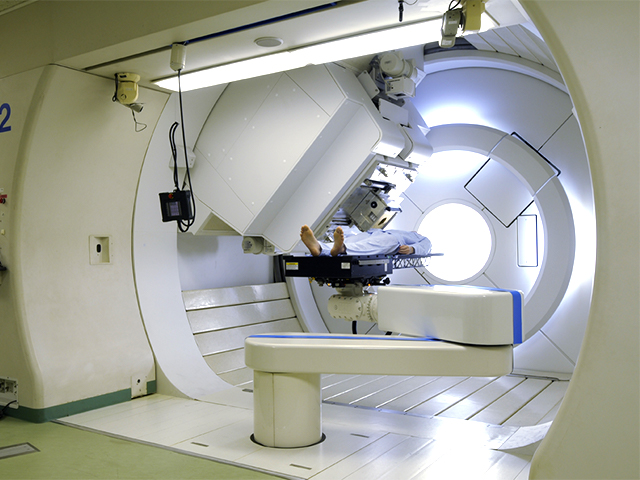
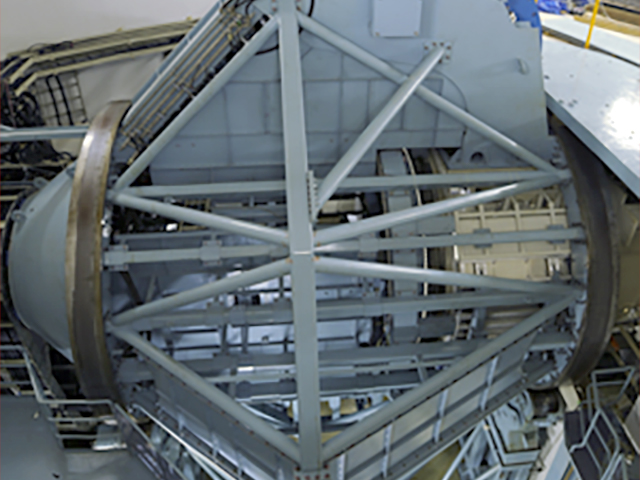
Further technical development, greater compactness, and reduced cost are necessary if proton beam cancer treatment is to become more widely used.
The protons generated and accelerated by the cyclotron form a continuous beam that is very intense. The SHI Group is currently collaborating with the National Cancer Center on the development of irradiation technology that makes use of this characteristic. Together they have developed a system that incorporates an advanced diagnostic imaging unit to increase the precision and speed of patient positioning, a step that can be time consuming and must be carried out each time treatment is performed. It is hoped that through development work such as this it will be possible to build systems that provide greater benefits to both hospitals and patients.
Aizawa Hospital, a private facility located in the city of Matsumoto in Nagano Prefecture, will become the first in the world to install the cyclotron and rotating gantry not on the same level but one above the other to conserve space. This type of system configuration can be used in locations where the available site area is limited, such as hospitals in urban areas. It is expected to become a model for future proton beam cancer treatment systems moving forward.
In response to worldwide calls for increased availability of proton beam cancer treatment, the SHI Group is pushing ahead with the development of technology for its systems while taking careful note of the views of customers.
Customer Viewpoint

Particle Therapy Radiation and Oncology Division,
Hospital East, National Cancer Center
The number of patients hoping to receive proton beam cancer treatment is increasing steadily. This is partly due to special riders in health insurance policies covering advanced treatment options, but it is mainly because clinical physicians such as myself see proton beam cancer therapy as having clear advantages over conventional X-ray radiation treatment and recommend it to our patients.
I would particularly recommend proton beam therapy to treat types of cancer where it produces dramatically better results than conventional X-ray radiation treatment. Examples include malignant melanomas in the head and neck and some types of lung cancer. In addition, the risk of secondary cancer, a concern when X-ray radiation therapy is used, is thought to be lower with proton beam therapy. This means it is definitely indicated for treating cancer in children. Another major advantage for patients in their active years is that treatment can be performed on an outpatient basis. That said, it is also suitable for treating elderly patients who are physically weak.
Future improvements I would hope for include increasing the precision of treatment, reducing the number of steps required when performing treatment and making them less time consuming, and making it possible to treat cancers that are somewhat advanced. I feel that this technological development will require further cooperative efforts by medical staff and the SHI engineers.
- *All contents are as of the time of the interview.
SHI Pride
- Vol.1 A Clear View of the Distant Heavens
- Vol.2 Cures without Surgery: Advanced Cancer Treatment
- Vol.3 Exploring the Mysteries of Space
- Vol.4 Dramatically Changing Quayside Cargo Handling
- Vol.5 Cyclo® Drives Continue to Evolve
- Vol.6 The Steam Turbine - Protecting the Environment and Advancing Society
- Vol.7 Persistent Determination to Reduce Defects, Losses and Faults to Zero
- Vol.8 Treating Cancer through the Use of Neutrons - A Compact Accelerator Opens the Door to Widespread Use -
- Vol.9 Automated storage system with unrestricted movement, for transforming the future of the logistics industry
- Vol.10 Anaerobic Wastewater Treatment and Biogas Power Generation System using Ume Seasoning Effluent bringing Recycling-Friendly Society
